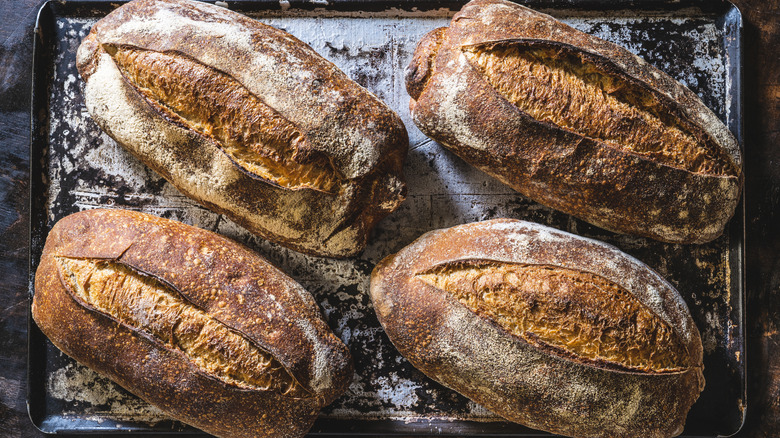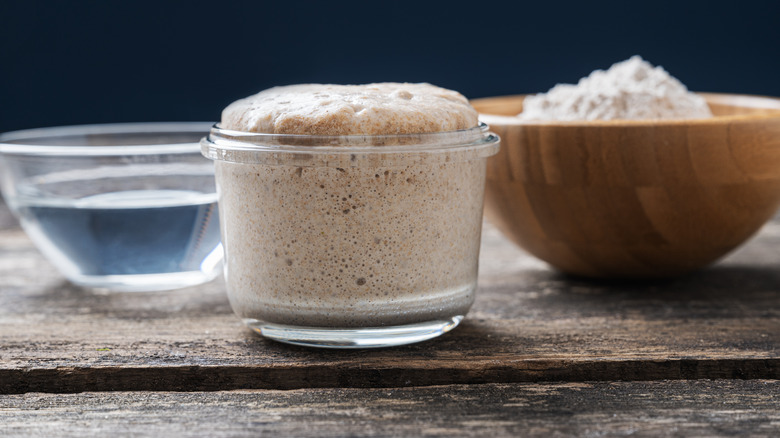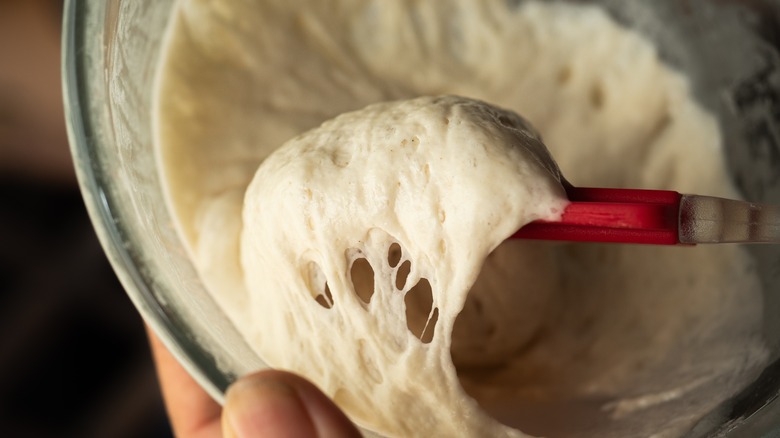The Oldest Sourdough Starter In The World Has Been Around For Quite A While
Before commercial yeast became available, the primary method for making tall and airy loaves was to bake sourdough. The natural fermentation of flour and water creates its own leavening agent for bread baking. Sourdough starter requires constant feeding and care to stay "alive"; otherwise, the process must begin anew from scratch. However, older starters tend to yield more complex and flavorful bread, so over time, they become cherished heirlooms passed down through generations.
This raises the question: What is the oldest sourdough starter in the world that is still in use for bread-making today? Sourdough baking's history dates back to the ancient Egyptians — and interestingly, a man named Seamus Blackley, alongside a team of archaeology and microbiology experts, managed to revive 4,500-year-old yeast microbes from ancient Egyptian bread-making vessels housed in a Boston museum. These microbes were carefully reactivated and used to cultivate a starter created with ancient grains. Finally, Blackley was able to bake an edible loaf of bread using this starter, making it the oldest known sourdough starter available for use today.
Each sourdough starter is a reflection of its surroundings
To grasp how this baking milestone was achieved, it's essential to understand what a sourdough starter is, and how it's created. It's all initiated with just two basic ingredients — flour and water. These components are mixed and left exposed to the open air. During this period, the mixture attracts wild yeast and beneficial bacteria from the environment. Over time, it begins to release gases and starts to bubble. These bubbles are crucial, as they enable the bread to rise and create delightful little air pockets in each loaf.
The creation and maintenance of a sourdough starter depend on microorganisms from its immediate environment, making each starter unique and a reflection of its surroundings. This is why sourdough from different regions has distinctive flavors. Some liken it to "terroir," similar to how regional wines are described. For instance, the famous sourdough from San Francisco boasts its prized tang due to the ocean's proximity and the cool, foggy weather, offering a distinct experience compared to a loaf made from the world's oldest sourdough starter. Variations in the grain used, or the location's humidity, can also significantly affect the bread's flavor profile.
Culinary uses of sourdough starter beyond bread
After investing the time and effort to create and nurture a sourdough starter, you might want to explore other culinary uses beyond just baking bread. No matter where the starter is used, it will contribute to the dish's leavening, and infuse its tart and dynamic flavor into every bite. Pancakes, waffles, bagels, and cinnamon rolls are popular breakfast options. For sweet treats, starter discard can be incorporated into chocolate chip cookies, brownies, or pastry dough. Even cakes become effortlessly creamy with a bit of sourdough starter added to the batter. If cultured beverages pique your interest, it's possible to use this fermented ingredient in drinks like kvass as well.
Exploring starter uses in world cuisine can also be fascinating. Ethiopian injera is a spongy flatbread made with a starter as the leavening agent. In Italy, a festive loaf of panettone, a beloved Christmas treat, is made with "mother dough," a form of sourdough starter. Or, take the ancient culinary experience full circle and try making fayesh, an Egyptian sourdough crispbread made from chickpeas.



